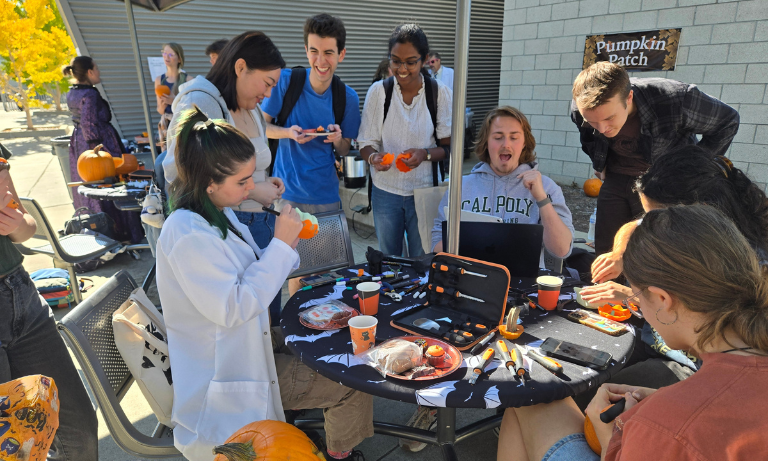Before it ever lifted off the planet, Cal Poly’s latest CubeSat had already traveled close to 7,000 miles.
The PolySat team’s mini satellite – called ISX, or Ionospheric Scintillation explorer — was one of 10 CubeSats aboard a Rocket Lab Electron rocket that launched from New Zealand last month, according to NASA. It marks the first time PolySat has experienced an all-CubeSat launch.
PolySat is a multidisciplinary and independent lab made up of students from a variety of majors. ISX team members include students studying aerospace, computer, electrical, mechanical and software engineering as well as computer science and physics.
This launch reaches a milestone, marking the 10th time Cal Poly has launched a CubeSat into space.

“This was a big mission for us with a tight schedule,” said Grigory Heaton, a senior studying aerospace engineering and physics, who is the co-mission lead with Cassandra Kraver. “Most of the assembly occurred last winter. It’s awesome that we get to have this spacecraft launched while most of the students who worked on the assembly itself are still here at Cal Poly.”
Funded by the National Science Foundation, the project began in 2015 as a joint effort with SRI International, an independent nonprofit research and development organization.
ISX was launched into an orbit with an altitude of about 500 kilometers — about 30 miles higher than the team’s last satellite, DAVE — or Damping and Vibrations Experiment — which launched in September from Vandenberg Air Force Base.
“ISX is a radio-science mission to study interactions between radio signals and plasma in the upper ionosphere,” Heaton said. “It will measure digital TV signals from orbit using SRI’s payload and be compared to measurements on the ground to study plasma structures in the upper atmosphere.”
The mission will be able to provide new measurements of ionospheric plasma structures that haven’t been obtained before, he added.
“It should improve our knowledge of the ionosphere and help to characterize ionospheric scintillation in general, which can cause interference for satellite transmissions.”
***

Co-mission lead Cassandra Kraver was also involved with NASA’s high-profile InSight project, which recently sent a robotic lander to Mars.
She and fellow PolySat team member Justin Nguyen served as interns with NASA’s Jet Propulsion Lab.
InSight (Interior Exploration using Seismic Investigations, Geodesy and Heat Transport) will study the interior of Mars, NASA says, providing valuable science as it prepares to send astronauts to the moon and eventually the Red Planet. InSight was accompanied into space by two CubeSats, called MarCO, which transmitted information about InSight as it landed on Mars.
“On the Insight landing day, the two MarCOs were relaying the EDL (entry, descent and landing) data from Insight back to Earth, so part of my job was monitoring for any data gaps from MarCO A to the ground,” said Kraver, an aerospace engineering student whose internship concludes this week. “Fortunately, neither spacecraft dropped any data they received from Insight. I’ve also been helping with the day-to-day operations of MarCO, including analyzing telemetry to understand the state of the spacecraft and creating sequences for various spacecraft activities.”
Nguyen, a computer engineering student, interned at JPL over the summer and returned several times during the fall.
“I had the opportunity to be involved with every aspect of flight operations, like writing uplink products, analyzing telemetry to help plan MarCO’s future activities, writing scripts to improve the operations process, and even visiting the InSight testbed at Lockheed Martin in Littleton, Colorado, to test MarCO’s bent pipe relay,” he said. “On InSight’s landing day, I was on console in the Space Flight Operations Facility and in charge of Systems and EDL Data Accountability for MarCO B.”
CENG alumnus Tim Weise was deputy mission manager of the InSight project.


